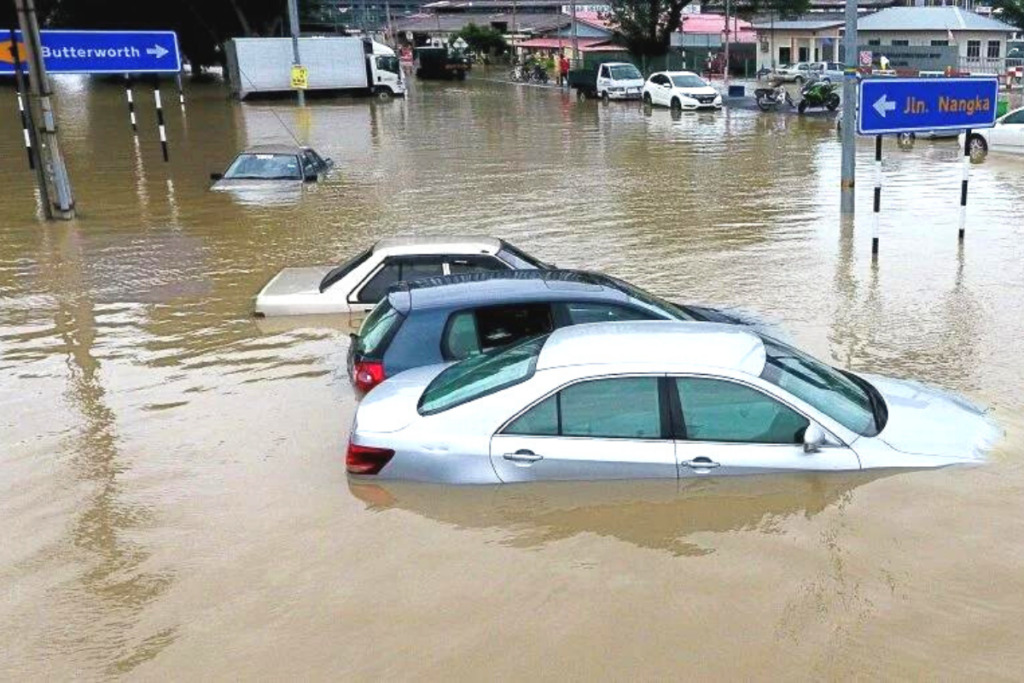Tips for Driving Through the Rain this Monsoon Season
Just like many countries around the world, Malaysia has 4 seasons; durian, haze, dengue and monsoon. As we’re within the monsoon period that usually occurs between October to March, we’ve seen unpredictable weather with continuous rain and occasional thunderstorms. While it’s the perfect weather to cosy up with a mug and a book or movie, it also brings about too many cases of flash floods, leading to damaged and stalled cars. If you’re unsure of how to navigate your car through rising waters, here are a few handy tips.
Stay calm and assess the situation
First and foremost, don’t panic. Take a moment to breathe and manage the situation rationally. In a state of panic, you might not be able to remember what to do next so always prioritize your self-awareness first before taking action.
Then, assess the water level to see if you can keep your car moving in a safe manner to prevent damage to your car. If the flood is severe and your car has come to a stall, prioritize your personal safety and exit your vehicle. In the event that water levels have rapidly increased, preventing you from opening the door with ease, you might have to use your full body weight and push with your feet or exit through the window.
Keep going and avoid coming to a stop
With manageable water levels, it’s important to keep moving. This prevents water from entering your exhaust pipe and damaging your engine and other parts of the car. While staying on the lowest gear, rev your engine slightly and keep driving at a slow and steady speed. If possible, try not to stop or park your car until you’ve reached a clear road.
Stay visible. Turn on your headlights & hazard lights
One of the many reasons for accidents during the monsoon season is due to the lack of visibility. Turn on your lights and on straight roads, use your hazard lights too. This isn’t just for your personal view but allows other drivers to notice your vehicle and keep their distance. On smaller roads and paths, it’s important to prioritize the use of your signal (ahem, use your signal!) so using your hazard lights here might not be ideal. As always, use your judgement to decide what would work best in the situation.
Stalled car?

First, stay calm and prioritize your personal safety. Do not attempt to restart your car if it comes to a stall as this can cause further damage to your engine and its various components.
Here’s what you should do:
1. Assess the water levels to determine your next move. In mild conditions, you can stay in the car until the water recedes. If the flood is rising, exit your car and locate a safe place to wait.
2. If you’re familiar with your car, pop the hood and disconnect the battery.
3. Call your insurance agent, takaful provider or mechanic and arrange for a towing service. (Plug: did you know Etiqa offers free towing services up to 200km?)
4. Call a friend or family member to assist you through this process. The situation may be stressful and exhausting to manage on your own. Additionally, you would appreciate the shared experience and a ride home!
Out of the waters, but what’s next?
Once your car is in the clear, don’t rush the process or your mechanic. During the monsoon season, reading about cars being partially or completely submerged to the point of damage is quite common. There are many things to assess to determine the extent of the damage. Some of the key things to look out for include:
- The exterior and interior space of your car. Flood water can leave dirt, mud and debris in your car. A good, deep clean will be required and a complete reupholstery might be necessary for more severe conditions.
- Damage to your engine or gearbox. A quick dipstick check will tell you if it’s been flooded and if it has, you would need to drain out the oil (and water) and flush it out multiple times to ensure it’s clear from contamination.
- Contaminated petrol tank. In some cases, water can enter your petrol tank which will ruin the performance of your car. In this case, your mechanic will need to drain the tank completely.
- Moisture in electrical components. Things like your radio, navigation system, speakers and other similar components may need to be removed and dried thoroughly.
- Rods, belts and other car components. Water damage can cause rust, breaks and degrade the condition of many supporting parts to your car’s operating system. Every bit of it will need to be inspected and replaced as necessary.
As a country with an extensive monsoon season, flood damage is definitely something to consider when it comes to picking your car protection plan. Did you know your basic motor plan usually doesn’t include flood coverage? Always look into the add-on options to ensure you’re thoroughly covered.
While a protection plan can’t soothe the heartache of a damaged car, it can soothe your finances.
The information contained in this blog is provided for informational purposes only. It should not be construed as advice on any matter. Etiqa accepts no responsibility for loss which may arise from reliance on information contained in this article.
